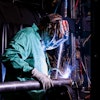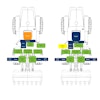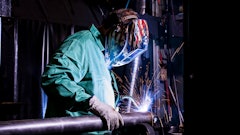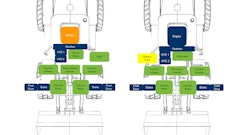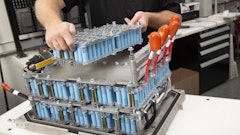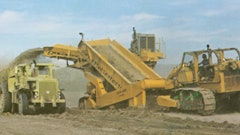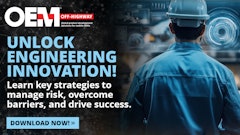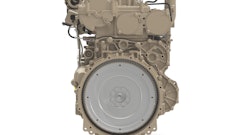
To assess emerging trends and the current and future OEM landscape, our team spoke with experts throughout the industry. Read below for insights from Allison Transmission's Executive Director, Global Marketing Branden Harbin.
1. What challenges most affected the mobile OEM landscape in 2023?
In 2023 and as we look ahead to 2024, emissions regulations are driving the need for innovation in our industry that reduces fuel consumption and emissions. The transformation from current conventional to future electric vehicle technologies is driving the need for OEMs to push to be ready for commercial vehicle electrification, while also needing to be patient and pragmatic. They are shifting research and development spend as well as engineering focus to EV platform development while at the same time advancing conventional technologies to meet current demands and evolving emissions regulations.
Alternative fuels, such as natural gas and hydrogen, are playing an increasing role in supporting OEMs and fleets as they look to adopt solutions that will help them reduce emissions and achieve sustainability goals in the near term. In the case of off-highway applications, dual fuel engines also provide environmental and cost savings benefits.
2. What are your predictions for the mobile OEM landscape in 2024?
The industry is continuing to evolve in an effort to improve vehicle efficiency, reduce emissions and meet upcoming changes to regulatory standards. While there is significant interest in electrification, many OEMs and fleets are hesitant to adopt fully electric solutions at this time due to limited driving range, lack of sufficient charging infrastructure, and the purchase price of electric vehicles. The overall adoption curve of EV is softening, with less than 1% of the global market adopting electric vehicles to date, excluding China. Including China, 3% of the global market has adopted EV to date. As a result of the challenges associated with full EV, alternative fuels are gaining momentum with OEMs and fleets as a solution for reducing emissions. In addition, alternative fuels are being reevaluated by regulators as a zero or near zero alternative to electric vehicles. Allison’s propulsion solutions are fuel agnostic, meaning they can accommodate several energy sources from traditional diesel and gasoline to natural gas and hydrogen combustion. Allison transmissions enable customers to reduce their carbon footprints and achieve sustainability goals without sacrificing fleet productivity and efficiency.
3. Where do you see the most potential for improvement or advancement in 2024?
Allison’s view is that incorporating alternative fuels into commercial vehicle fleets will be a critical component of meeting emissions reduction standards now, while OEMs wait for electric vehicle technology to mature and enhanced charging infrastructure to be in place. This is particularly true in off-highway applications where more robust infrastructure will be required.
As an example, natural gas vehicles offer a variety of fuel benefits, which are amplified by Allison transmissions. Our patented torque converter multiplies engine torque at launch, enabling peak performance and fuel efficiency while reducing CO2 emissions. This allows commercial vehicle fleets to use familiar and proven hardware to achieve sustainability goals, delivering an industry-leading solution for fleets.In addition, dual fuel engines and constant speed engines can also help increase vehicle efficiencies and sustainability while EV develops over a longer period of time.
4. What will be the biggest challenge for OEMs and the industry in general in 2024?
The competing pull for resources to fund conventional technologies in parallel with EV development programs will be a challenge for many years to come. These challenges are all at the forefront of the concerns OEMs are focused on while, as an industry, we collectively seek to reduce emissions to create a better and more sustainable future. At this pivotal stage in the evolution of emerging technologies, collaboration between OEMs and suppliers to manage development costs and capital investments will be essential to ensuring success. In addition, there are unknown factors related to EV in terms of how durable the technology will be in commercial vehicle applications. As an industry, we know internal combustion engines well and how to integrate them and manage them to ensure long-term durability and reliability. There is more unknown relative to EV in this regard.
Allison is deeply committed to helping OEMs to solve the challenges that come with evolving technology and emissions standards. This will involve advancing our conventional transmissions to provide an ideal blend of fuel economy and efficiency, partnering with OEMs to pair Allison transmissions with engines powered by alternative fuels, as well as continuing to expand our eGen Power family of fully electric axles to plan for a future of electric vehicles.
5. What factors should engineers and their companies consider when making decisions in the mobile OEM space in 2024?
Ultimately, the voice of the customer and the broader commercial vehicle industry should drive where we focus our engineering resources and efforts in the near and mid-term. Allison is committed to continuing to expand our portfolio of propulsion solutions to meet the needs of our nearly 350 OEM partners and more than 15,000 fleet customers.
6. Please highlight ONE recently introduced product from your company that meets a specific, pressing need in the mobile OEM space, and describe briefly how the product is uniquely designed to meet that need.
Allison developed the TerraTran, a propulsion solution specifically designed to meet the tough demands of global mining and construction applications by creating a smoother, more powerful and reliable transmission. The TerraTran was purpose built for off-highway applications such as mobile crane, articulated dump truck and wide-body mining dump trucks.TerraTran was developed based on voice of customer input, which indicated a need for the proven reliability and durability of Allison’s 4000 Series transmission, but with increased horsepower, torque and GVW capability, along with fast reverse capability. Prior to its launch, Allison’s TerraTran underwent more than two years of field testing and development. Data acquired from real world testing helped the Allison team prove the success of the product and its ability to meet customer requirements.
7. What are some of your company's priorities in 2024 with regard to electrification, automation, innovation, emission reduction and/or other emerging trends?
For generations, Allison has had a reputation for leading innovation in the commercial vehicle industry. Change, adaptability and innovation have been part of our DNA since James A. Allison founded the company in 1915. In the last five years alone, Allison has made $450 million dollars in direct investments to advance electrified propulsion technology. Through our legacy and experience with both conventional and electric hybrid propulsion technology, Allison has gained valuable knowledge in the full system integration that vehicles of the future will require. Allison also understands the vast array and intensity of the duty-cycles and unique operating conditions that commercial vehicles encounter every day. Due to our extensive experience and history of innovation, Allison is well-positioned to drive the next generation of propulsion solutions. But ultimately, no single company alone will solve the challenges that lie ahead. As an industry, we’ll have to continue partnering and collaborating to solve these complex challenges.
For additional insights on the state of the industry and what's to come in 2024, click here to read more.

